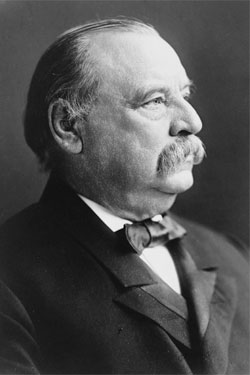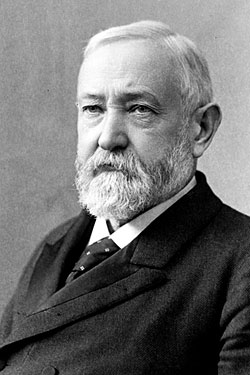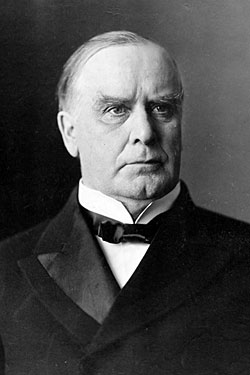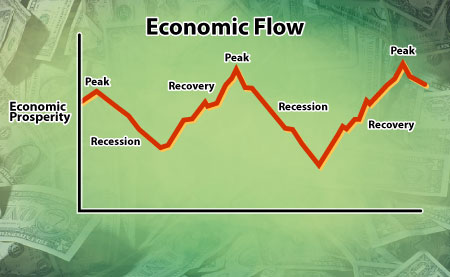Government Reform
The first presidency of Democrat Grover Cleveland in 1885 was amidst high tariffs and railroad monopolies. Cleveland called for some reform. Under his administration, the Interstate Commerce Act was passed and an Interstate Commerce Commission was set up to enforce the legislation. The Interstate Commerce Act required railroad companies to set rates that were proportional to the distance traveled. It also required that companies published rates publicly. Cleveland lost a second presidential term to Republican Benjamin Harrison. Cleveland wanted to reduce taxes on foreign goods, and Harrison wanted to raise them, which won the support of industrialists.
 |  |  |
| Grover Cleveland | Benjamin Harrison | William McKinley |
The U.S. Treasury was full. Harrison was not conservative with money, and he awarded large pensions to the dependents of civil war soldiers and rebuilt the Navy.
When industrial spending slowed and unemployment began to rise, the economy headed toward a depression. Soon after Cleveland returned to the presidency in 1892, he was forced to guide the country through an economic depression. His reluctance to provide federal help to the population turned his fellow Democrats against him and he did not get the Democratic nomination for president in 1896. Government reform during the administrations of Cleveland and Harrison failed to control the economic impact of industrialization. During the presidential administration of William McKinley, the economy recovered and the Republicans controlled inflation with the Gold Standard Act of 1900 and the Dingley Tariff, which raised taxes on foreign goods.
|
|
